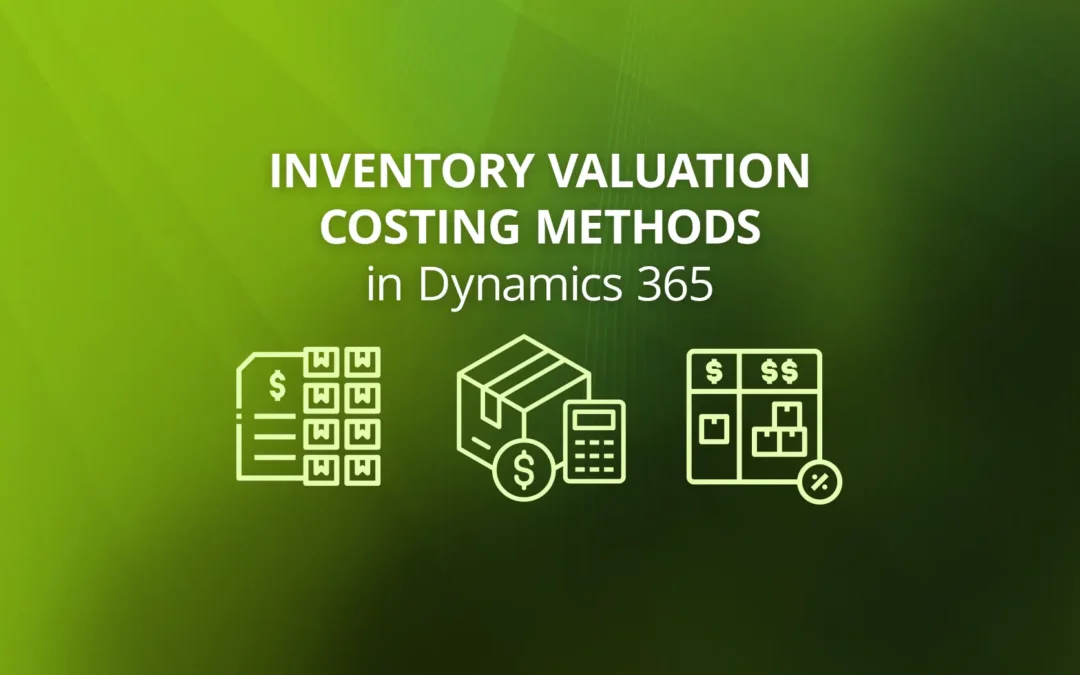When you’re managing Finance, Inventory, or Supply Chain in Dynamics 365 Finance & Operations (F&O), one of the trickiest areas is inventory costing. Get it wrong, and suddenly your margins don’t make sense, your cost of goods sold (COGS) is off, and your financial reporting feels more like guesswork than guidance.
At the heart of it all are the costing methods you choose in Dynamics 365. FIFO, LIFO, Weighted Average, Moving Average, and Standard Cost aren’t just accounting jargon, they directly influence how your margins, profitability, and financials appear.
Let’s break each one down in plain English, with practical examples and a sense of where each approach might be right for your business.
Inventory valuation costing methods in Dynamics 365 Finance & Operations explained
How does FIFO (First-In, First-Out) costing method work?
How it works
The oldest inventory items (first in) are considered and sold first (first out).
Who uses it
Businesses in retail, distribution, or industries with fast-moving goods where stock naturally rotates.
Example
A Melbourne-based wholesaler buys 100 units of a part in January at $10, then 100 more in February at $12. When selling 100 units in March, FIFO records them at the January cost ($10).
Impact
Margins look stronger during times of inflation (because older, cheaper costs are matched to current revenue). But stock on hand may look undervalued.
How does LIFO (Last-In, First-Out) costing method work?
How it works
The newest inventory items purchased (last in) are considered and sold first.
Who uses it
Less common in Australia (see note below on LIFO tax rules) but still configurable for management reporting. Useful for industries where recent costs better reflect market realities.
Example
Using the same numbers as above, the March sale would record COGS at $12 per unit (the February cost).
Impact
Margins appear tighter in times of rising prices (because the latest, higher costs are matched to revenue). This can present a more conservative picture of profitability.
A Note on LIFO in Australia and New Zealand
While Dynamics 365 F&O includes configuration for the Last-In, First-Out (LIFO) costing method, it’s important to understand how this is treated under local accounting rules:
- Australia (AASB / IFRS): LIFO is not permitted for financial reporting under AASB 102 (aligned with IFRS). Businesses must generally use FIFO, weighted average, or specific identification for interchangeable inventory.
- New Zealand (NZ IAS 2): LIFO is also not permitted for financial reporting under NZ IAS 2. FIFO or weighted average must be used where inventory items are interchangeable.
From a taxation perspective:
- In Australia, the ATO allows inventory to be valued at cost, market selling value, or replacement cost. LIFO is not one of the recognised valuation methods, so it is not used in practice.
- In New Zealand, Inland Revenue also requires inventory (trading stock) to be valued at cost or other accepted methods, again excluding LIFO.
Because requirements vary between financial reporting and tax rules, and may depend on your specific circumstances, please check the official guidance in your region:
How does Weighted Average costing method work?
How it works
All purchases are pooled to calculate an average unit cost, updated each time new stock arrives.
Who uses it
Businesses with large volumes of interchangeable goods, think manufacturing, bulk raw materials, or commodity trading.
Example
That wholesaler now has 200 units: 100 at $10 and 100 at $12. The weighted average cost is $11. A sale of 50 units will book COGS at $11 each.
Impact
Smooths out price fluctuations, giving a stable cost base. Margins are less “spiky,” which simplifies reporting but may mask recent price changes.
How does Moving Average costing method work?
How it works
Similar to weighted average, but recalculated dynamically with each transaction. Each purchase immediately adjusts the cost, and each sale uses the current moving average.
Who uses it
Businesses needing real-time cost tracking, particularly in high-volume, fast-moving environments.
Example
Buy 100 units at $10 → moving average = $10. Buy another 100 at $12 → moving average shifts to $11. Sell 50 → COGS posts at $11 each, leaving stock at $11.
Impact
Very responsive to recent costs, but can create complexity when large price swings occur in small batches.
How does Standard Cost costing method work?
How it works
You set a fixed, pre-determined cost per item. Variances (actual vs. standard) are tracked separately.
Who uses it
Manufacturers who want cost stability for budgeting, forecasting, and margin control. Common in organisations with complex BOMs and production environments.
Example
A manufacturer sets the standard cost of a component at $11. Even if suppliers charge $10 or $12 in reality, the system posts at $11 and books the variance.
Impact
Makes reporting and margin analysis predictable, but requires regular review of standards to avoid disconnects from reality.
Why choosing the right costing method in Dynamics 365 F&O matters
Choosing the right costing method in Dynamics 365 F&O isn’t just about compliance, it’s about strategy. Each method tells a slightly different story about your margins and financial health. The key is aligning your costing approach with your industry, your supply chain, and your reporting needs.

